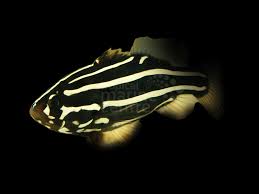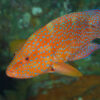Exploring the Influence of Dragons in the Development of Creative Industries in China

Dragons are a central symbol in Chinese culture, representing power, prosperity, and mystical forces. Their deep roots in ancient mythology and their enduring presence in the country’s art, philosophy, and traditions have allowed them to transcend the realms of folklore and superstition. In the modern era, the dragon continues to play a significant role in shaping various sectors of Chinese society, including the rapidly expanding creative industries. These industries, encompassing fashion, film, animation, design, and advertising, are profoundly influenced by the symbolism and cultural importance of dragons. This article will explore how the dragon has contributed to the growth and development of China’s creative industries and examine its role in both traditional and modern Chinese cultural expressions.
The Dragon as a Cultural Icon
In Chinese culture, the dragon is revered as a powerful and auspicious creature. Often depicted with the features of a serpent, fish, and other creatures, the dragon represents the natural elements of water, wind, and fire, as well as the cosmic balance of Yin and Yang. The Chinese dragon is often associated with the emperor and imperial power, symbolizing authority, strength, and protection. The Dragon Gate, for instance, is a powerful symbol of transformation, where the dragon is said to ascend to the heavens after overcoming a waterfall. This notion of overcoming adversity and achieving greatness is reflected in many aspects of Chinese culture, making the dragon an essential element in various forms of art, performance, and design.
As China continues to modernize and globalize, the dragon has evolved from a traditional symbol to a cultural brand that influences the creative industries. The dragon’s rich cultural heritage, combined with its versatility as a symbol, has played a pivotal role in propelling China’s creative sectors onto the world stage.
The Dragon in Fashion Design
One of the most prominent areas where the influence of dragons can be seen is in fashion design. In recent decades, Chinese designers have found ways to incorporate traditional symbols, such as the dragon, into their modern collections. The dragon, often viewed as a symbol of luxury and opulence, has been used in designs for everything from runway shows to street fashion.
The famous Chinese designer Guo Pei, renowned for her elaborate creations, frequently includes dragon motifs in her couture collections. Guo Pei’s use of the dragon symbolizes both imperial splendor and timeless tradition, connecting her work to centuries of Chinese heritage. Her designs, particularly those featured in high-profile events such as the Met Gala, combine Western haute couture techniques with traditional Chinese motifs, creating a fusion of cultures that reflects the globalization of Chinese fashion.
Similarly, Shanghai Tang, a luxury fashion brand known for its modern take on traditional Chinese clothing, frequently incorporates the dragon in its designs. The dragon motifs appear on embroidered silk, dresses, and jackets, bringing together elegance and cultural symbolism. Through these designs, fashion designers aim to present a contemporary vision of Chinese identity while paying homage to the past. By reviving the dragon as a central motif, designers can express cultural pride and creative innovation.
The global reach of these designs has helped Chinese fashion gain international recognition, as more designers and fashion houses use the dragon as an iconic symbol to express exoticism and mystique. As a result, the dragon has helped promote the growth of China’s fashion industry, encouraging new designers and reinforcing China’s position as a key player in the world of fashion.
The Dragon in Film and Animation
Dragons have also played an important role in China’s film and animation industries. The mythical creature has appeared in countless films, television series, and animated works, often serving as a symbol of strength, adversity, and transformation.
In Chinese cinema, dragons are frequently used in historical epics and fantasy films. One of the most iconic portrayals of the dragon in Chinese film is in “The Sorcerer and the White Snake” (2011), where the dragon is central to the plot. The film, based on an ancient Chinese legend, tells the story of a white snake spirit who transforms into a woman, while the dragon represents the divine power that helps her in her struggle against evil forces. The use of dragons in Chinese fantasy films emphasizes their roles as symbols of cosmic power and mystical transformation.
Similarly, the popular Chinese animated series such as “Big Fish & Begonia” (2016) prominently features dragons as symbols of elemental power. The dragon’s fluid motion and majestic appearance provide a sense of the vast, mystical realms in which these characters reside. Through beautiful animation and storytelling, dragons in Chinese animation represent otherworldly forces, merging ancient mythology with modern digital artistry.
In addition to the Chinese film industry, the global success of franchises like Disney’s “Mulan” has helped further elevate the cultural importance of dragons in Chinese art. In “Mulan,” the dragon Mushu, although a humorous character, still carries the traditional meaning of strength, guidance, and loyalty. This use of dragons in Hollywood-style productions contributes to the globalization of Chinese myths and stories, blending the ancient with modern pop culture.
The Dragon in Graphic Design and Advertising
In addition to fashion and film, dragons have a significant presence in graphic design and advertising in China. Many brands, particularly those associated with luxury, heritage, and cultural identity, use dragon motifs to evoke a sense of prestige and authenticity. The dragon’s versatility in design allows it to be adapted to various industries, from corporate branding to product packaging.
For example, Chinese technology giants like Huawei and Alibaba have used dragon symbols in their branding to convey a sense of national pride and strength. These companies, by incorporating the dragon into their logos, tap into the traditional symbolism of power, wisdom, and leadership. The dragon is a way to connect with Chinese consumers, evoking the heritage and cultural values that resonate deeply with the public.
In the advertising industry, dragons are often used in promotional materials to convey a message of excellence. Companies like Coca-Cola and Pepsi have also incorporated dragon imagery in their Chinese marketing campaigns to appeal to local consumers, as the dragon is seen as a positive symbol of strength and good fortune. The use of dragons in these campaigns highlights the cross-cultural appeal of Chinese symbolism and the growing influence of Chinese traditions on global branding strategies.
The Dragon in Architecture and Urban Design
The influence of the dragon is also evident in architecture and urban design. In many parts of China, especially in the southern regions, dragon motifs are often seen on buildings, temples, and public monuments. These symbols of power and protection are used to convey a sense of national pride and cultural continuity.
In modern architecture, the dragon is used to inspire designs that reflect modernity while remaining connected to tradition. For example, the design of the National Centre for the Performing Arts in Beijing, often referred to as the “Giant Egg”, is said to have been inspired by the dragon’s sleek, flowing lines and majestic form. The building’s flowing curves and dynamic shape reflect the fluid movement of the dragon, connecting the structure to both ancient cultural symbols and contemporary architectural innovation.
Urban design, particularly in cities like Shanghai and Beijing, has also incorporated dragon imagery in the layout of streets, parks, and even the design of public transportation systems. This fusion of old and new demonstrates the continued relevance of the dragon in shaping the cultural and aesthetic landscapes of China.
Conclusion: The Dragon as a Driving Force in China’s Creative Industries
The dragon has proven to be an enduring symbol in Chinese culture, and its influence has only grown stronger in the context of China’s expanding creative industries. From fashion design and film to advertising and architecture, the dragon’s symbolism continues to shape and influence artistic expression. In doing so, it helps to preserve China’s rich cultural heritage while also positioning Chinese creative industries on the global stage.
The continued use of the dragon in these diverse industries speaks to its timeless appeal and its ability to adapt to the changing cultural, social, and political landscapes. Whether as a symbol of imperial power, national pride, or creative innovation, the dragon will undoubtedly remain a significant force in China’s creative future.

